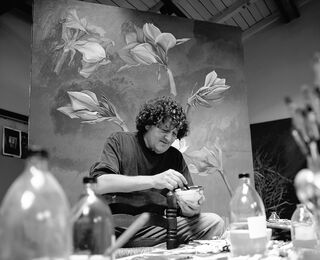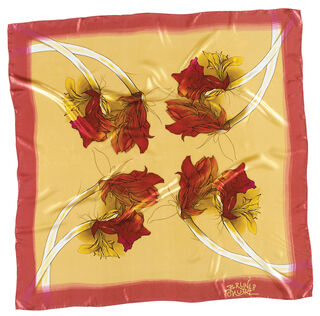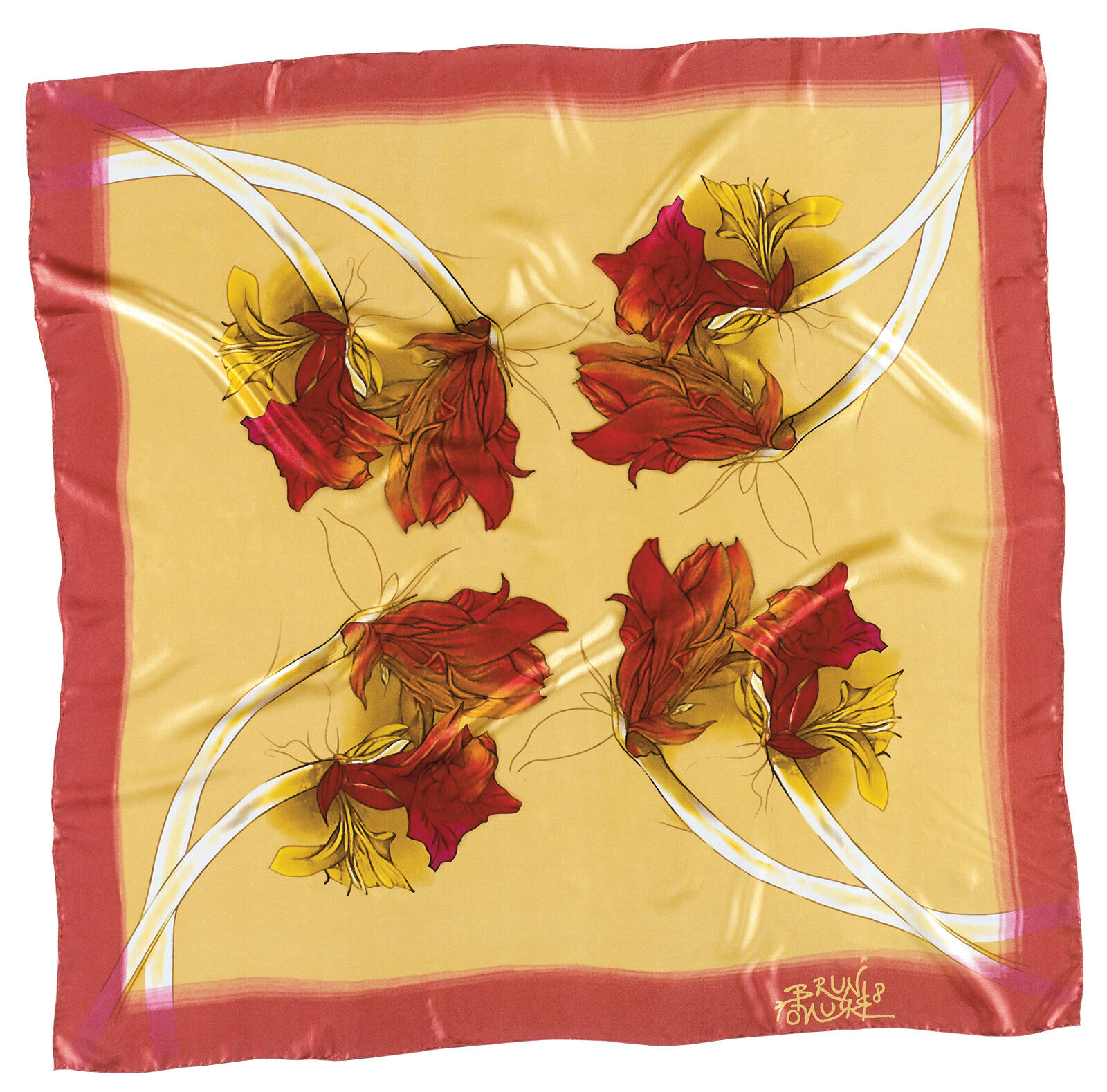Silk scarf "Amore per i fiori"
Silk scarf "Amore per i fiori"
Quick info
serigraph on silk crêpe satin | handmade and -rolled hem | size 100 x 100 cm
Detailed description
Silk scarf "Amore per i fiori"
Bruno Bruni's magnificent array of blossoms: Flora is an important subject in the work of the Italian artist Bruno Bruni. "Flowers are natural phenomena that I admire!" he once said. He made various flowers into motifs for his extensive oeuvre of paintings, lithographs and sculptures, including orchids, lilies, roses and, above all, the amaryllis, which he repeatedly reinterpreted.
Bruno Bruni depicts the flowers in his typical and unique visual idiom for this silk scarf. Although he does not present them true to reality, he masterfully captures their most significant contours with fine lines and allows the flower to lose none of its natural beauty. The surface of the silk cloth makes the lush blooms glow in a unique way.
Serigraph in 18 colours, transferred and rolled hem by hand onto pure silk crêpe satin. Size 100 x 100 cm. Comes in an elegant gift box.
Customer reviews
Schöne Farben, angenehmes Material.

About Bruno Bruni
Born in 1935, Italian painter, graphic artist, and sculptor
"Art must be for everyone."
Truly a life devoted to art: Bruno Bruni, an internationally celebrated and successful painter, graphic artist, and sculptor, has been working as a freelance artist for more than six decades, creating a broad and extensive oeuvre that inspires collectors and art lovers worldwide.
Without being committed to any particular school, he developed an individual style early on, based on figurative elements, such as those reminiscent of the Renaissance and Mannerism but also revealing other influences, such as those of Surrealism. Bruni's depictions often radiate a beguiling beauty and grace, which he skilfully contrasts with elements like missing faces. His choice of motifs is also impressive, with its very diverse subjects. On one hand, there are his classics, which he repeatedly varies and combines, such as sensual female nudes, the trench coat, or the amaryllis. On the other hand, he also creates thoughtful moments with motifs such as the Warsaw Ghetto, Sophie Scholl, Anne Frank, Rosa Luxemburg, or Che Guevara.
Colour lithography, in particular, allows Bruni a high degree of spontaneity and freedom during the process of creation. His slender female nudes, still lifes and delicate floral motifs take on an erotic charm through their graphic expression. His flower still lifes are reminiscent of Albrecht Dürer's graphic studies of nature. However, Bruni is not just concerned with the detailed reproduction of the motif but with the sensual radiance of the floral objects. Typically for his drawings, the dominant element is the line, which seems to be in constant flow and balance. The motif is defined by the beautifully curved serpentine line. The little-structured internal form invites the viewer to intensively follow the contour.
Bruno Bruni was born in 1935 in Gradara, Italy, and grew up in poor living conditions. Already as a child, Bruni started painting and in 1953, he began studying at the Istituto d'Arte di Pesaro. In 1960, he transferred to the Hochschule für Bildende Künste in Hamburg, where he was accepted without any entrance examination and studied under the painter and graphic artist Georg Gresko, later under Paul Wunderlich. In 1965, Bruni left the university – without graduating. But he was already able to sell his first paintings and received a scholarship from the Lichtwark Prize of the City of Hamburg in 1967. In 1968, in protest against the mechanisms of the art market, he co-founded the cooperative "CO-OP" with other artists, and a little later, he achieved the breakthrough he deserved. Yet despite all his success, Bruni was then as he is now, an authentic artist who neither allows himself to be taken over by the art business nor follows trends. He has also never identified with the elitist pretensions of the art scene. "Art has to be for everyone," he says, and not just for rich people.
Since he began exhibiting, Bruni has presented his works in numerous art houses, including London, Rome, Munich, Milan, Amsterdam, Tokyo, New York, Zurich, and St. Petersburg. In 1977, he was awarded the renowned "International Senefeld Award" for his lithographs, and in 2003, he received a very special honour for his services to contemporary art - the title "Official Knight of the Republic of Italy". In 2014, Bruni received an honorary doctorate from the Russian-Armenian University in Yerevan.


